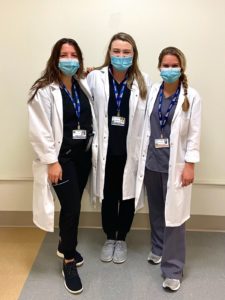Today’s topic is 11 myths about treating dysphagia. I wrote these up hoping it to be a good resource for all the new speech language pathologists out there.
MYTH 1: Aspiration=Pneumonia (PNA): Aspiration is often our cause of concern when it comes to patients we treat. We are always trying to keep them safe from aspirating. And we end up putting most of these patients on altered diets significantly affecting their quality of life. Well, aspiration does not always result in aspiration pneumonia unless accompanied by several other factors. Aspiration is only a piece of the puzzle of aspiration pneumonia. Just because someone aspirates they do not have to develop PNA.
MYTH 2: Thickened liquids reduce the risk for aspiration: Thickening of liquids was initially introduced for patients with poor bolus control or delay of swallow and is extremely beneficial for persons who are critically ill or has decreased cognitive skills. It should be noted however that thickened liquids are JUST one tool in our tool box and cannot be used as a ONE SIZE FITS ALL approach. Research shows thickened liquids may reduce aspiration/penetration, however they also increase the risk of residue, which can always be aspirated post swallow.
MYTH 3: A chin tuck is always safe: I am sure most of us working in SNF’s might have experienced this at least once. A nurse or CNA comes and tells you “I saw that patient coughing and I asked him to put his chin down when swallowing”. Well research shows enough evidence to support cautious use of this postural maneuver, as it is contra indicated in several physiological conditions. This compensatory maneuver should only be implemented by a qualified SLP after an examination has been completed and if warranted an instrumental examination such as a FEES or modified barium swallow study.
MYTH 4: Cervical Ausculation (CA) helps identify pharyngeal phase dysphagia: In the hands and ears of a trained clinician, CA can help rule out or identify the presence of silent aspiration. However, this tool cannot be used alone, as stated by ASHA “There is insufficient evidence to recommend CA for evaluating risk of aspiration and pharyngeal stage dysphagia”.
MYTH 5: Pulse Oximetry is a good predictor to determine aspiration: SPO2 values are definitely good tools to assess the respiratory status of a patient, However it DOES NOT give you reliable information on aspiration. A literary review of the journals noted that a majority of studies failed to demonstrate an association between observed aspiration and oxygen desaturation. Current evidence does not support the use of pulse oximetry to detect aspiration.
In our next edition, we will share the remaining myths. In the mean time, I’d love to hear your thoughts or questions.
About the Author: Ranjini Rajan, CCC-SLP is a Speech Language Pathologist with Language Fundamentals. Ranjini is originally from India and is a graduate of the All India Institute of Speech and Hearing. She is passionate about bi/multilingualism, cognition, language and adult speech and language disorders.



